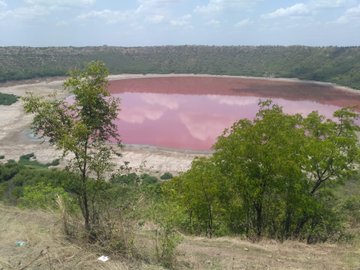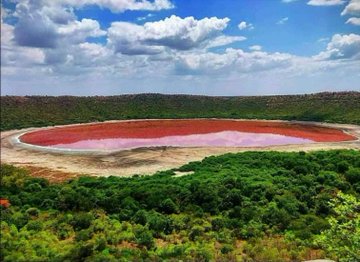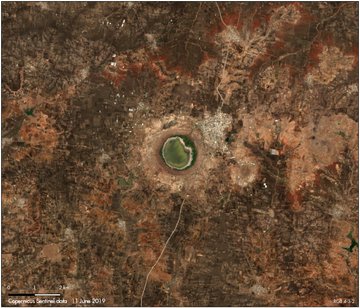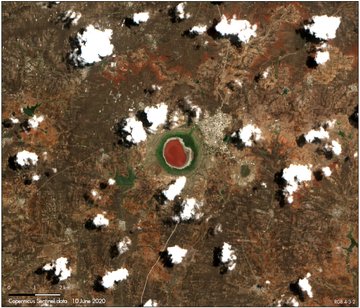The year 2020 has thrown yet another curveball our way, in the form of a color-changing lake.
Lonar Lake lies in a meteorite impact crater in Maharashtra State, India, some 500 kilometers (311 miles) east of Mumbai, and is commonly dated to around 50,000 years ago (although recent dating suggests it could be a lot older). Earlier this week the normal blueish-green hue of the lake reportedly turned to a reddish-pink color. Whilst further tests need to be carried out to determine the exact cause, experts have suggested that changing salinity levels and the presence of a specific algae in the lake could be to blame.
According to local-knowledge and records, a similar color-change was witnessed around 2000, but did not garner as much attention, nor was it as prominent. This time, lake water samples have been sent off to the National Environment Engineering Research Institute (NEERI) for analysis to uncover the exact reason for the phenomenon. In the meantime, local geologist, Gajanan Kharat offered up his explanation in a video on Maharashtra Tourism’s Twitter Feed.
“Salinity in the lake has increased as water level has gone down drastically this year and it has become warmer too resulting in overgrowth of algae,” Kharat was quoted as saying by AFP. “This algae turns reddish in warmer temperatures and hence the lake turned pink overnight.”
Indeed, other experts, such as Professor Suresh Mapari, suggested to local newspaper Lokmat that the release of a red pigment (carotenoid) by a large bloom of Halobacteria and Dunaliella salina algae was the culprit. Although for him, the trigger for this remains unanswered at present.
The 150-meter-deep (500 foot) and 1.8-kilometer-wide (1.12 mile) impact crater, is one of the largest known to exist in basaltic (volcanic) rock anywhere on Earth. This caused some confusion with geologists when the crater was originally discovered in the 19th century, as they believed it to be of volcanic origin. However, the crater has since been attributed to a cosmic impact due to the presence of maskelynite, a naturally occurring glass only formed by extremely high-velocity impacts.
Scientists from across the globe have continued to be intrigued by both the crater and its lake. The water itself is both alkaline and saline, and in 2007 evidence for biological nitrogen fixation (conversion of atmospheric nitrogen to ammonia) was discovered. This recent development will certainly add another colorful chapter to Lonar Lake’s history.










No comments:
Post a Comment